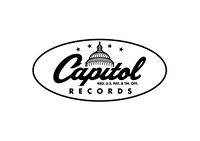Capitol Records
Relevance
Mentioned In
- Morrissey Capitol Records Timeline
- RELEASE - Release Information (October 29, 2022)
- Bonfire Unlit. - Release Information (November 14, 2022)
- Rebels Without Applause - Release Information (November 25, 2022)
- BONFIRE DOUSED: - Release Information (February 7, 2023)
- New Recording. - Release Information (February 21, 2023)
- In Conversation With Morrissey - Gabfest (April 3, 2023)
- ‘BONFIRE OF TEENAGERS’ IS NONE OF YOUR BUSINESS - Morrissey Central (June 14, 2023)
- Morrissey on "Good Day New York" - Fox5NY (October 20, 2023)
- A RUSH AND A PUSH AND THE MUSIC IS OURS - Morrissey Central (April 19, 2024)
- Morrissey: 'My whole life has relied on free speech – naturally, I’m gagged' - The Telegraph (September 9, 2024)
Discogs Information
Profile
Please note, many Capitol Records issues also carry an EMI logo. This is not a label, and EMI should not be added as a label; it instead indicates that Capitol was part of the EMI Group. For LPs the label design may help identify the era of release. See vinylbeat.com & friktech.com links below.
Label Code: LC 0148 / LC 00148.
The Capitol Records, Inc. company was founded on April 8, 1942 in Hollywood, California as "Liberty Records" by the songwriters Johnny Mercer, Buddy G. De Sylva and record store owner Glenn Wallichs. On June 4 of the same year, the label was named "Capitol" to avoid a conflict with the New York City-based Liberty Music shops. By 1946, Capitol had sold 42 million records and was established as one of the Big Six labels.
In January 1955, the British company Electric & Musical Industries Ltd. (EMI) acquired Capitol Records, Inc. for $8.5 million.
In the UK, Europe and Australasia, EMI began releasing Capitol product in January 1956, after the licenses of The Decca Record Company Limited and other licensees expired.
In 1979, Capitol was made part of the EMI Music "Worldwide Division." In 2001, EMI Group Plc merged Capitol Records label with the Priority Records label.
In September 2012 Capitol Records was purchased by Vivendi S.A. (owner of the Universal Music Group). As of March 2024, Capitol Records is part of Universal's Interscope Capitol Labels Group.
Please note: unofficial / counterfeit releases should use Capitol Records (2) instead.
Capitol Records album prefix codes: Catalog numbers are generally divided into a prefix (from 1 to 4 letters) and a number. The number is the actual release number. Capitol started numbering at 100, with some of their subsidiaries (like Tower) starting at higher numbers (such as 5000 for Tower and 3350 for Apple). By 1968, their regular issue albums had reached 2999; 3000 to 9999 were reserved for subsidiaries so they started over at 100. In 1972, album numbering reached 999 and catalog numbers jumped ahead to 10000.
The prefix is composed of letters. • If the record is in stereo, then the first letter is "S.". If the first letter is a "D", the record is in reprocessed stereo created from mono recordings (= Duophonic).
No letter corresponds to a mono recording.
• The second letter is the price code. Beginning in the late 1950s, "T" was the standard code for a full-price single LP. Other letters, such as W, M and K indicate a different list price. • The third letter (if present) indicates the number of discs in the album. "A" = single LP, "B" = two LPs, "C" = 3 Lps, etc. • A fourth letter (if present) means there was some kind of special packaging, such as a boxed set, gatefold cover, booklet, etc.
45 RPM Catalog Number, Date and Label Identification: 791 through 4290 (1949–1959): Purple label with Capitol logo on top. 4291 through 4663 (1959–1961): Purple label with Capitol logo on left side. 4680 through 5999 (1961–1967): Orange and yellow "swirl" label. Regarding Capitol 4664 through 4679, we've seen enough inconsistencies in this gap to render us unable to make any concrete determinations. Thus far, the highest number we've seen, pressed exclusively on purple, is 4663. The lowest number we know of, pressed exclusively on orange and yellow, is 4680. Many numbers in-between appeared on both Capitol labels. Numbers prior to the beginning of 45 rpm production are reissues of material first issued on 78 rpms.
External Links
- https://www.discogs.com/label/654-Capitol-Records
- https://www.instagram.com/capitolrecords/
- https://capitolrecords.co.uk/
- https://www.facebook.com/capitolrecords
- https://www.facebook.com/CapitolRecordsUK
- https://www.friktech.com/btls/capitol/capitollabels.pdf
- https://www.friktech.com/labels/CapitolAlbums11.pdf
- https://www.jerryosborne.com/firstpressings.pdf
- https://eighthavenue.com/capitol.htm
- https://imgur.com/a/dRJz9
- https://imgur.com/a/krnN3
- https://www.vinylbeat.com/cgi-bin/labelfocus.cgi?label=CAPITOL&label_section=A,B,C
Wikipedia Information
 |
Capitol Records, LLC (known legally as Capitol Records, Inc. until 2007), and simply known as Capitol, is an American record label owned by Universal Music Group through its Capitol Music Group imprint. It was founded as the first West Coast-based record label of note in the United States in 1942 by Johnny Mercer, Buddy DeSylva, and Glenn E. Wallichs. Capitol was acquired by British music conglomerate EMI as its North American subsidiary in 1955. EMI was acquired by Universal Music Group in 2012, and was merged with the company a year later, making Capitol and the Capitol Music Group both distributed by UMG. The label's circular headquarters building is a recognized landmark of Hollywood, California. Capitol is known as the record label of the Beach Boys and The Kingston Trio, and as the U.S. label of the Beatles (their native label being Parlophone), especially during the years of Beatlemania in the U.S. from 1964 to 1967. Capitol Records artist roster also includes Katy Perry, Ice Spice, Sam Smith, Troye Sivan, Kodak Black, Doechii, 50 Cent, Yeat, That Mexican OT, Young Miko, Maggie Rogers, Lewis Capaldi, Niall Horan, Kings of Leon, Paul McCartney, Bee Gees, and Meovv.
Related Forum Threads
- [Morrissey Central] "Release" - Bonfire release details (October 29, 2022) - Morrissey-solo (Oct 29, 2022)
- [Morrissey Central] "Bonfire Unlit" (November 14, 2022) - Morrissey-solo (Nov 14, 2022)
- [Morrissey Central] "Roll On 2023" (December 23, 2022) - Morrissey-solo (Dec 23, 2022)
